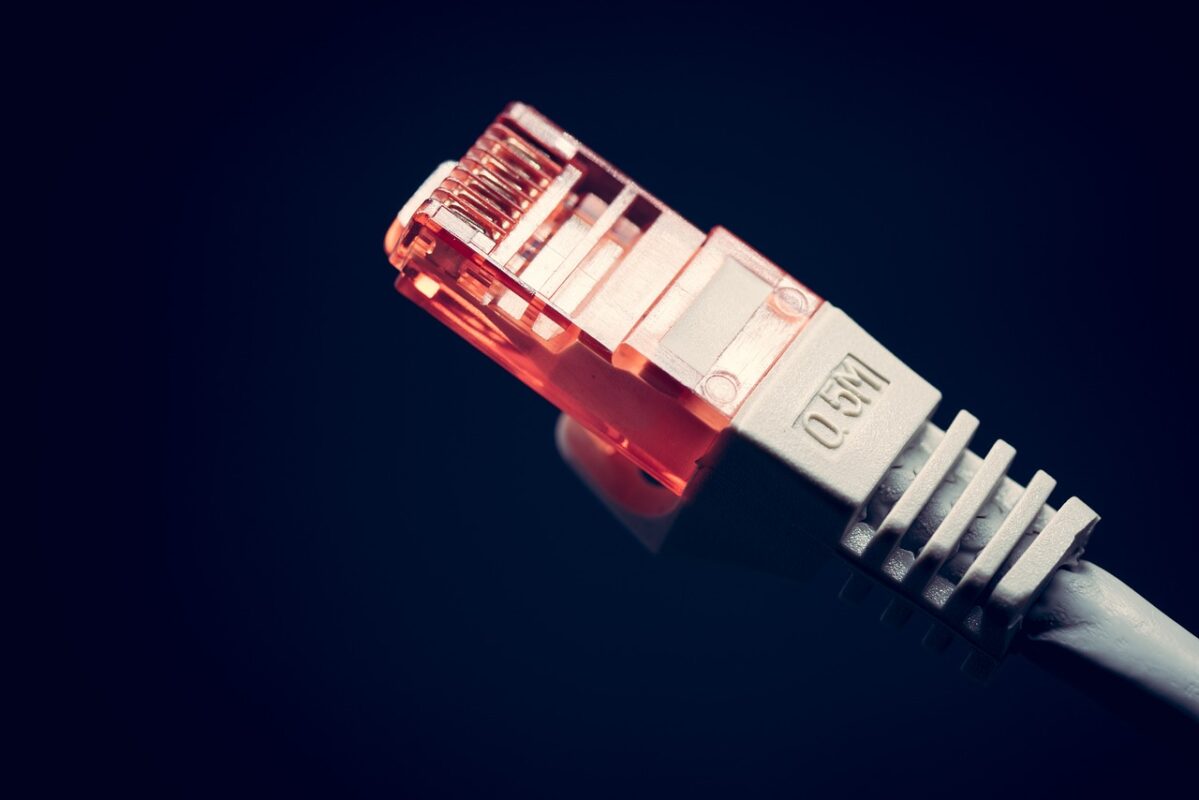ISP stands for “Internet Service Provider”, basically your Internet Service Provider. The ISP’s function is to allow you to connect and perform all kinds of network activities, including playing video games, using shopping and sales pages, social networks, etc.
In its beginnings, the Internet was a technology intended for academic, governmental, and scientific environments, that is, its access was destined to specific and exclusive areas. Finally, in the early 1990s, a group of private companies took the initiative to offer the service to the general public and thus began the first commercial ISPs, becoming intermediaries between the user and the network. Today, most of the providers are telecommunications companies.
This implies that what was accessible to a few, in a considerable lapse of time, became a massive communication network that enables connection to other networks around the world. This service is offered by organizations that may be private, community, commercial or non-profit and is aimed at users through different means.
How does an ISP Work, and What Types Are There?
To understand how they work, it’s important to mention that hierarchies or different levels depend on the network features to which each ISP is connected.
Tier 1 ISP
These are national or international in scale and connect directly to the internet backbone, one of the main internet connections, composed of numerous interconnected routers. It’s the most important part, as it provides central support to the system, contains a high-capacity connectivity infrastructure, and supports the different parts of the network. It functions as the human spine that supports the rest of the limbs.
At this level, customers are lower-tier ISPs or large companies and organizations. Because they’re at the top, their services are rated as the most reliable and the fastest. This is due to the fact that customers are only one Internet connection away, so the chances of failures or slow information flow are very low, which makes the service very expensive.
It’s worth mentioning that Tier 1 ISP providers are particular to each country and may be directly administered by the government.
Tier 2 ISP
This type of ISP generally focuses on business customers and tends to offer more services than ISPs in the other two tiers. They have IT resources to offer services such as email and web servers and can also include developing and maintaining e-commerce/e-business websites.
At this level, unlike Tier 1 ISPs, they tend to have slower access to the Internet and are often less reliable.
Tier 3 ISP
The last type of ISP, Tier 3, purchases its Internet service from Tier 2 ISPs and targets the retail and household markets. It’s a fact that your customers do not need many of the services required by Tier 2 customers since their only need is connectivity and support.
However, despite having a lower bandwidth and lower reliability than Tier 1 and Tier 2 providers, they can be a good option for small and medium-sized businesses. They have local or national coverage and can connect to each other or to Tier 1 ISPs.
What are the Technologies Used to Provide Services?

1. Connection Through a Telephone Line
You can connect through a modem by dialing a series of numbers
While the connection is secure and affordable, it has disadvantages, such as not being able to make simultaneous phone calls and being slow compared to other options. This is reason enough for it not to be one of the most widely used options today. Although it’s a good option if there is no broadband service in the area.
2. Broadband Connection Through the Telephone Network.
DSL, or digital subscriber line, is a model that allows you to connect through a telephone line. We can find this service in areas where there is telephone wiring, so it’s usually provided by telephone companies.
It works by taking advantage of the signals that active telephone networks do not use and works by connecting to a DSL router connected to a telephone jack via a telephone cable.
They offer average internet speed and do not require investment in expensive equipment. In addition to the fact that the telephone can be used simultaneously, DSL is not shared with other users.
It’s worth mentioning that the speed depends on the distance to the service provider.
3. VOIP Telephony Service
This acronym refers to voice over IP, a service that consists of a set of technological resources that make possible the transmission of voice over the Internet through the IP protocol. Fundamentally, its main advantage is the reduction of costs in relation to traditional telephony.
This service allows making and receiving calls over the Internet through a voice adapter that converts the analog signal of the traditional telephone into a digital signal that can be sent over the broadband connection.
The number of calls that can be made simultaneously will depend on the bandwidth of the Internet connection and the VOlP devices. This service does not have physical telephone lines since everything is transmitted through the network or Internet connection routes such as fiber optics, local area network (LAN), or ADSL, being this service is essential for companies that use telephone communications as their main source to develop their business, for example, a call center, among others.
4. Connection via Subscription Television
This option is reliable and can be more economical because it allows you to contract cable TV and Internet together. It also means less time delay when performing actions such as accessing a website or playing online games.
However, because they’re so popular, they depend on your geographic location, since the bandwidth is shared with the users of the same service in the area and is distributed among them, the speed varies due to the use of the rest of the users.
5. Wireless Wi-Fi Network, Radio Connections for Computers and Cell Phones
Wi-Fi allows you to move around and stay connected because it does not require a modem. Nowadays, you may carry a pocket device that allows you to connect to the Internet and perform activities independently.
This modality has been adopted around the world by governments, hotels, bars, restaurants, and train stations, among other establishments, to provide Internet connectivity. This allows you to have an internet connection and communicate in many places around the world without spending money to hire the service.
6. Fiber Optic Internet Providers
The fiber Internet connection is a physical medium for the transmission of information. It’s composed of a thin filament that can be made of glass or plastic through which laser or LED light pulses travel containing data that are received and sent at high speed.
This method has the advantage of:
- Avoiding electromagnetic interference and being one of the most advanced methods of information exchange today.
- Taking up little space and being easy to install.
- Being a lightweight element with high mechanical and thermal resistance, and most importantly, its speed, efficiency, and safety compared to other methods.
- Covering long distances.
Among its disadvantages, we find that:
- It requires converters to switch from light energy to its informational sense.
- It requires complex emitters and conveyors whose energy supply cannot be taken from the same line.
- It has a shorter service life when in contact with water.
- This ISP technology is limited to urban populations, leaving out potential rural consumers.
- Repairing a section of the fiber is impossible, resulting in higher costs when renewing the cables.
7. Satellite Internet Providers
Geostationary satellites are used to transmit data between the Internet and users. These remain in orbit above the Earth’s equator, and only one can provide reliable communications to approximately 40% of the Earth’s surface.
Due to the distance that data must travel from space to earth, delays can be caused, in fact, it’s one of the services with the longest response delays, they’re also susceptible to weather changes, and their speed also depends on how busy the network is at any given time.
Despite its limitations and unreliability, it’s often the only option for people in rural areas, deserts, or mountainous locations.
8. Access Providers
Access providers, also called IAPs, are companies or organizations that provide Internet access for businesses or private customers. Their goal is to connect their customers through the use of ISP technology such as dial-up modems, digital subscriber links (DSL), wireless routers, or high-speed, dedicated modems. In addition, for a monthly subscription, customers can obtain a software package, a username, a password, and a variety of specific services.
Given the services offered, customers can browse the Internet, send and receive mail messages, upload data to remote online storage, access software tools, and host a website.
Access providers often rent or purchase large quantities of Internet links from ISPs. Access providers then resell the parts of the purchased connections to the general public. ISPs and IAPs are interconnected through Network Access Points (NAPS).
9. Hosting ISPS
Hosting companies can act as ISPs by offering web hosting solutions. This service provides users with an online storage space called a webspace, where all information will be stored and active for one year.
In this sense, it refers to the place a web page, files, e-mail, or a system can occupy on a server hosting several applications or websites.
There are different types of hosting; among them, we can find:
- Free hosting.
- Hosting by donation.
- Shared hosting.
- Image hosting.
- Video hosting.
- Corporate mail hosting.
- Reseller hosting.
- Dedicated servers.
- Administrative and non-administrative hosting.
- Virtual servers.
- Positioning.
- Managed dedicated servers.
- Cloud web hosting.
10. E-mail box providers
E-mail service providers are companies that offer an infrastructure service for receiving, sending, and managing messages over the Internet. Among the most popular are Gmail, Yahoo!, and Hotmail (Outlook).
To access the user only needs to have an account and password to access the mail management platform and can use it from any device.
The service they offer allows the connection to their servers using standard mail protocols to download the mail to any computer the user wants. Among the features offered is the maximum size of the files that can be attached and the management of anti-spam filters, among others.
What makes a good provider is the implementation of encrypted versions for authentication and data transfer in order to provide confidentiality, authenticity, integrity, and non-repudiation.
What is the structure of ISP?

Physically the Internet is composed of routers interconnected by communication links. The simplest IPs comprise a few routers with a general purpose and are connected to each other by proprietary or leased links.
As networks become more complex and have a greater number of elements that specialize in their applications, security, and management become more important, physical location also becomes an important factor, and the ability to handle high customer densities is critical.
Current ISP structure
Today’s provider infrastructure is characterized by high redundancy in highly scalable and reliable elements in conjunction with multiple high-capacity links. This allows for an excellent quality of service, which includes fast connectivity. This allows an excellent quality of service, which of course, includes fast connectivity.
By imposing a hierarchical structure, routers can use redundant paths and determine which are the best routes. In addition, they facilitate the separation of broadcast domains. One way to impose structure on a complex network is to assign specific tasks to particular routers, and one possible solution is to divide it into:
- Concentration routers that provide connection to individual clients. This equipment can support a large number of relatively low-speed ports connected to the clients.
- Backbone routers provide high-speed forwarding of information packages from one domain to another or from one service provider to another.
Structure of ISP Model
We can say that the structure of an ISP can be organized as:
- Access network.
- Concentration network.
- Backbone.
- Management network.
Most ISPs impose a physical structure on their networks by organizing them into points of presence (POPs), which are physical locations where a series of equipment is available. These include access nodes or RAS, RAS hub routers, client hub routers with dedicated lines, and backbone routers.
The interconnection of users with the provider’s data network is done through POPs. It’s made up of three hierarchical levels of interconnection. The backbone level, concentration level, and access level.
Role of ISP
There is no denying that the use of the Internet is useful for both business management and leisure time enjoyment. For this to happen, a stable and reliable Internet connection is required. Therefore, the companies that provide the Internet connection service have a great responsibility in addition to providing you with a quality service.
However, within the services they offer, they must ensure that certain aspects are also important, in addition to speed and reliability.
Among them, we can find services of:
Security

Cyber security is aimed at protecting systems, networks, and programs from digital attacks. These attacks aim to access, modify or destroy confidential information, disrupt business continuity, or extort by stealing information.
The best ISP security services use strong mechanisms such as encryption, privacy policies, and monitoring capabilities.
While ISPs provide optional preventive security controls, the ultimate decision is made by customers. However, they should be responsible for blocking spoofed IP addresses as a basic security measure.
According to the Center for Applied Internet Data Analysis (CAIDA), about 70% of the IP space is not spoofable, which means that most ISPs fulfill this function.
Questions Oriented to Know the Method of Protection
How do you protect access to your critical infrastructure management?
It’s imperative that service providers separate their production systems and customer data from the ISP’s own desktop and employee data center environments.
How many different security groups does the vendor have in place to protect your systems?
Many organizations or companies have multiple internal security functions. This can cause resource conflicts and different approaches to infrastructure protection, a highly inefficient method.
It uses the same services it sells to protect its own systems?
If the contracting ISP does not trust its own products and services, why should we, the users, trust them?
It’s worth mentioning that if security controls are poorly managed, they can obstruct legitimate business activities and invade privacy to the point of becoming censorship; therefore, it’s advisable to know in depth the security service they offer and to know what you’re looking for from them.
Bandwidth

Bandwidth is the amount of data that can be transferred between two points on the network in a given time. Internet providers guarantee bandwidth to their customers, which means that a minimum level of speed and data transmission capacity is to be expected. It’s controlled by the ISP’s infrastructure’s physical bandwidth and the service plan’s artificial limitation.
ISPs offer average speeds customers can expect to receive, which are conditioned by network congestion, the technology used, and geographic location.
The measurement used is the Mbps of your network, and it’s what determines the speed of the Internet, being a connection higher than 25 Mbps is considered good for basic activities. It should be noted that if the need for a 25Mbps connection is demanded by 3 people using the same service, increasing the bandwidth to 100Mbps.
Bandwidth planning and management
This is one of the most important aspects of network management, as it’s a potential cause of direct impact on service quality and customer satisfaction.
To overcome this obstacle, techniques such as:
• Congestion control
It involves monitoring network traffic and taking measures to ensure that bandwidth is distributed equitably and efficiently among customers.
• Assignment of priorities
This technique consists of assigning priorities to different types of network traffic to ensure optimal performance for critical applications such as email and web search. Consequently, the bandwidth available for non-critical or bandwidth-intensive applications is limited.
• Sharing policies
These rules and regulations ensure that all users use the available bandwidth efficiently and equitably. They consist of limiting the amount of bandwidth available for types of traffic, such as file downloads and online games, among others.
• Load balancing
This is a technique that aims to optimize network performance and ensure that information traffic is distributed evenly among servers and network components. This is done through the use of specialized hardware or software that monitors network traffic and distributes it among the available servers.
This technique is essential to maintain network scalability and availability, so it can help improve network speed and performance, avoid congestion, and ensure a consistent, high-quality experience.
Technical Support
Among the responsibilities that fall on ISPs, technical support is essential to help customers resolve any problems or concerns related to their services.
They must ensure that technical support departments are available 24 hours a day, 7 days a week. In addition, it’s essential for the staff to be skilled and trained, familiar with the services they offer, and able to help resolve any problems or concerns.
Access to a simple communication channel is essential for users to get help resolving problems. Email, phone numbers, or live chat are the most commonly used channels.
Impact of the COVID-19 Pandemic on the ISP Market
In the course of the COVID-19 pandemic, companies providing Internet connectivity services have been challenged by the need for greater online connectivity. We have all experienced a change in the experience of many of our activities in relation to the use of the Internet.
This was translated in the market by an increase in demand due to an increase in teleworking and online education; as a result, the connection to a high-speed service has been increasing dramatically, which is reflected in the number of subscribers. As a result, competition in the market has intensified due to the need to improve offerings and service quality.
Also, the infrastructure was challenged due to the number of people around the world performing various tasks. This led to increased investment in network improvements and the modernization of pre-existing infrastructure. This, in turn, requires constant development of technologies that adapt to new technologies. Examples include 5g technology and fiber optics.
ISPs and the Growing Development of the Internet of Things (IoT)
The internet of things refers to the network of objects that have embedded sensors, software, tracking devices, and home control systems. It also includes connected cars and other types of technologies with the goal of exchanging information with other devices and systems through the internet.
The implementation of IoT requires a high-speed and reliable internet connection, which implies a joint development with ISPs, fundamental bandwidth, and a connection with good infrastructure to allow interaction and constant transmission between devices.
Currently, ISPs create a bridge between people, processes, and IoT, being fundamental to protecting sensitive data handled by users, whether organizations, enterprises, or individuals, so both ISPs and IoT will continue to develop and complexify their systems.
There are currently many industries or sectors that can benefit from IoT and ISPs working together. Here are a few examples:
- Automotive area.
- Transportation and logistics companies.
- Commercial companies.
- Public sector.
- Health care.
- Safety in different industries.
- Agriculture.
Conclusion
ISPs appear to have a deep reach into the society around the world. They function as a bridge between transmitter and receiver for information traffic, allowing activities of different complexities to be carried out.
The use of the Internet allows you as a user to be connected to the rest of the world, which is crucial for areas such as communication, education, research, entertainment, and business management, among other activities. Therefore, we can affirm that they provide an invaluable resource.
This global connection means that individuals, organizations, and companies can access a wide range of resources and tools that enable continuous development. Creating, boosting, and increasing productivity while improving product quality and, in many cases, improving users’ quality of life are other benefits.
In addition, the economic growth of companies and clients is positively influenced in many cases since it allows access to new markets, new contacts, job creation, and income generation.
As for society, it’s undeniable that it has had a great impact because it allows access to information and professionals from around the world. This has undoubtedly generated political, cultural, and interaction repercussions.
Due to the large network of information traffic for which ISPs are responsible, it’s worth mentioning the responsibility that falls on both customers and providers to protect the information in transit.
In the future, we can look forward to the development of new growth-oriented technologies, product variety, and user benefits, as well as the complexification of infrastructures as a consequence of the advance of these technologies and services at a global level.
Frequently Asked Questions
It acts as a bridge between users and the online world, delivering data through various technologies. ISPs offer internet plans, manage network infrastructure, ensure connectivity, and often provide additional services like email, web hosting, and security solutions.
ISP delivers Internet access through various technologies such as DSL, cable, fiber optics, or wireless connections. They maintain the necessary infrastructure, including physical cables, routers, and servers, to enable data transmission between your device and the broader internet.
ISP often provides additional services like email accounts, web hosting, domain registration, security features, and virtual private networks (VPNs) to enhance user experiences and ensure secure online interactions.
ISP can potentially access your internet traffic data. To enhance privacy, consider using encrypted connections (HTTPS) and using additional security measures, such as VPNs, to protect your online activities from prying eyes.
Yes, there are various types, including broadband, wireless, satellite, and more. They differ in terms of the technologies used, coverage areas, and the quality of service they provide.
Selecting the right ISP is crucial for a seamless online experience. It impacts factors like internet speed, reliability, and customer support, which are essential for both home and business users.
Consider factors such as speed, reliability, customer reviews, contract terms, data caps, and pricing when choosing an ISP.

